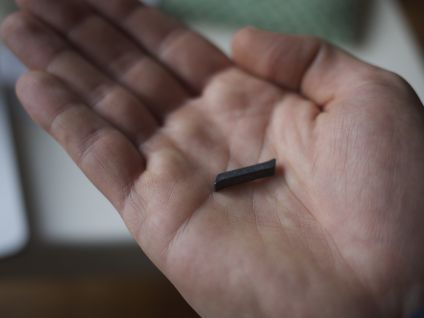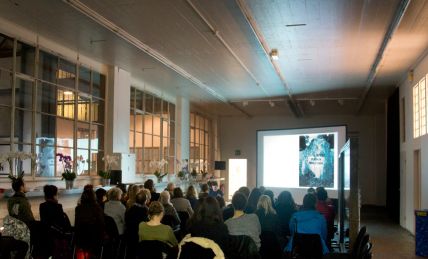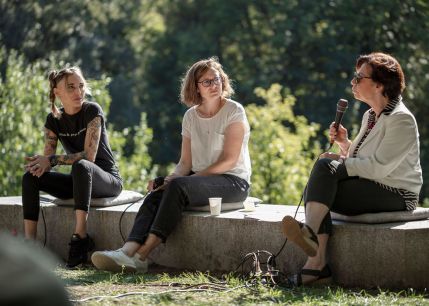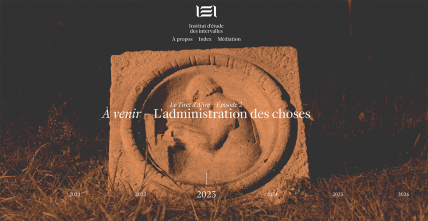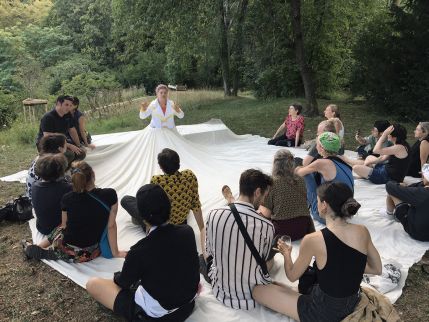>
There are also two dates separated by a small hyphen. She doesn’t like looking at the hyphen that sums up the entire line of Madam’s life, her long life. But the sight of that tiny hyphen makes it seem it was nothing but a short moment between two large Doors, the Entrance and the Exit. And almost nothing in between. *
Le Tiret d’Alice Rivaz (Alice's hyphen)
With Institut d’étude des intervalles
In her novels and short stories, Alice Rivaz had resolutely turned away from the great figures and events of history to focus on the unfinished nature of life, on the stories and aspirations of the voiceless. Her remarkable commitment to women's rights and the dignity of the most vulnerable did not involve a theoretical or overarching approach, but rather adopted an incarnated perspective, as close as possible to the people and issues addressed. Recognized as a major Swiss novelist from the 20th century, and a feminist pioneer in French-language literature (her novel La Paix des Ruches, published in Paris in 1947, preceded Simone de Beauvoir's Le Deuxième sexe by two years), she nonetheless occupies a surprisingly discreet place in the collective memory, as evidenced by the modest design of her tomb in Geneva's Cimetière des Rois. More relevant than ever, her writings are nonetheless enjoying a significant resurgence, supported by the engagement of the Alice Rivaz Association and specialists in her work such as Françoise Fornerod and Valérie Cossy.*
Alice Rivaz (1901 – 1998) is known as one of the great Swiss writers of 20th-century, and a pioneering feminist novelist in French. She is buried in Cimetière des Rois, among the monuments dedicated to prominent figures from Geneva. Her grave, both elegant and surprisingly discreet, consists of a fragment of rock adorned with metal letters, including her name, her dates of birth and death, and in between: a hyphen.
In two of her short stories written over forty years apart (“Une Marthe” in 1944, “La Bonne” in 1985), Alice Rivaz evoked this dash on our graves, which is supposed to “contain our whole life”, but which no longer says anything about the wealth of experiences and relationships that have made up our existence. In her words, the hyphen expresses the tension between the point of entry and exit, between one era and another, that our different life paths take us through. This sometimes painful movement is made up of a succession of thick layers that must be pierced, evoking both the condition of the women of her time and the fate of the humble, of the subalterns: people assigned to the work of caring for others, so often invisibilized, to whom Rivaz tries to lend a voice.
Intrigued by this image of the hyphen and its multiple resonances, I began a search that led me on a journey through the novelist's life and work, meeting members of her family, specialists in her work and those involved in the construction of her funerary monument.
The research initially resulted in a lecture-performance, alternating investigation narrative and sound extracts, entitled “Le Tiret d'Alice Rivaz (Habiter l'intervalle)”. Inaugurated in 2016 during the exhibition “Open End” at the Cimetières des Rois, it has since been regularly presented in Geneva at various festivals and institutions.
In 2020, at the invitation of the Bex & Arts Triennale, I presented a granite sculpture realized in the image of Alice Rivaz's hyphen, that could also serve as a bench. First shown in the Szilassy park during the exhibition, then installed permanently in the garden of the Villa Bernasconi art center in Lancy, the sculpture Le Tiret (the hyphen) is designed to host a regular program of meetings, readings and performances echoing the novelist's recurring themes and commitments. The Institut d'étude des intervalles (iEi), a collective of Rivaz specialists and enthusiasts from a variety of arts and research fields, has been constituted. It is mandated by Villa Bernasconi to organize this public program over a ten-year period, from 2021 to 2031.
The project's website features sound archives of these annual events, short films by director Laura Cazador, original editions and other cartes blanches: i-e-i.net
A bronze cast of the hyphen from the Rivaz tomb was given to each person who contributed to the investigation through their testimony, as a counter-donation
Alice Rivaz: writing in between.
Performance and collective program.
* Alice Rivaz, "La Bonne" (1985), in Sans Alcool, ed. Zoé, Geneva, 1998/2015
** Françoise Fornerod, Alice Rivaz, Pêcheuse et bergère de mots, ed. Zoé, Geneva, 1998; Valérie Cossy, Alice Rivaz, Devenir romancière, ed. Suzanne Hurter, Geneva, 2015
> projects: Le Tiret d'Alice Rivaz (Habiter l'intervalle)
Le Tiret [sculpture and public program]
> text: Le Tiret

